stream/download this segment as an MP3 file
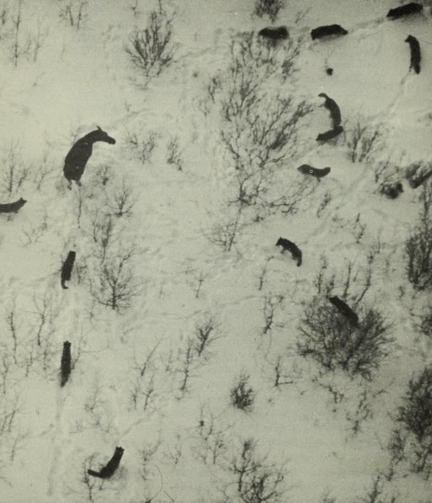
At
its heyday, the Isle Royale wolf population had as many as 50 wolves.
The current population has just three individuals and is virtually
guaranteed to die out, barring human intervention. (Photo: L. David
Mech/USFWS, Wikimedia CC)
Transcript
CURWOOD: Now Doug Smith was telling Jennifer that his first close encounter with a wolf was on Isle Royale, an isolated island in Lake Superior, where wolves have been closely studied. Indeed, scientists have followed the wolves and the moose they prey on at Isle Royale National Park for over five decades, the longest study of its kind in the world. But now the study is threatened by the dwindling number of predators, and the wolves could be gone as early as next year. One of the study leaders, Rolf Peterson, is an ecologist at Michigan Technological University, and he joins us to explain what is happening. Welcome back to Living on Earth!PETERSON: Thank you.
CURWOOD: Isle Royale is an island, so how do wolves and moose get there?
PETERSON: The present moose population became established over 100 years ago, probably by an individual swimming from the mainland 15 to 20 miles away. Lake Superior is so cold that only a very large animal like a moose could survive the cold water. Wolves came about 50 years later, in probably the late 1940s and they would've come across the ice in the winter.
CURWOOD: Now, Rolf, you been observing this interaction between the wolf and the moose for decades now. What did the wolf-moose relationship look like back when the project started?
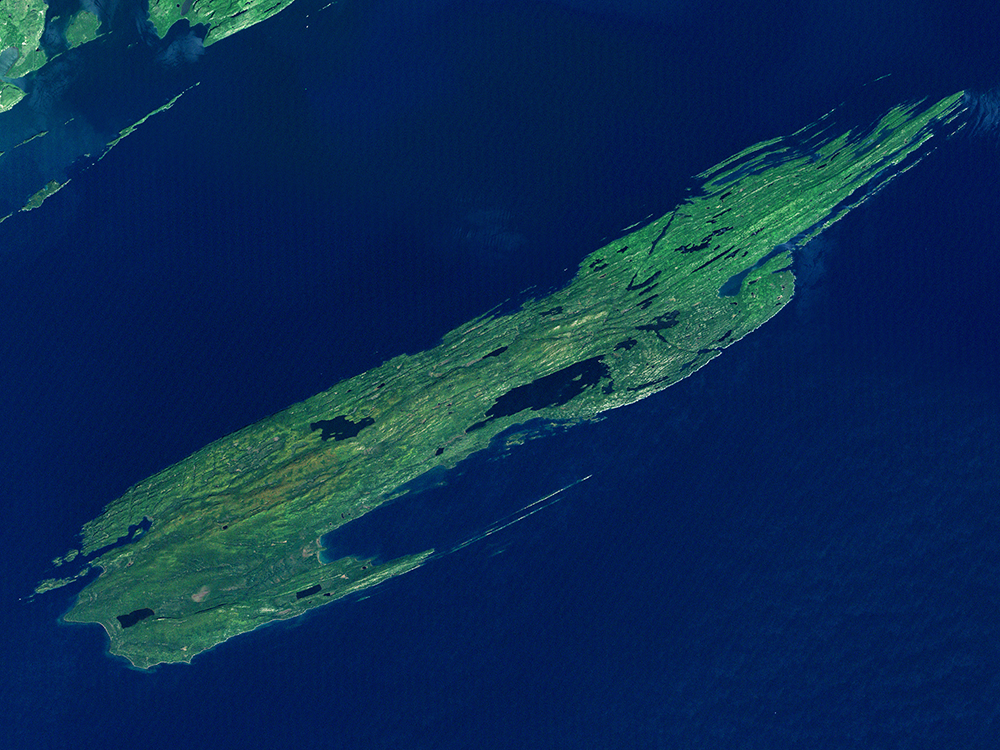
The wolves of Isle Royale first arrived on the Lake
Superior island in the late 1940s by crossing an ice bridge. (Photo:
Glenn Research Center, Wikimedia CC)
CURWOOD: A wolf makes it over from the mainland and changes the genetic pool?
PETERSON: Yeah, a wolf wanders over from mainland and becomes a breeding individual on the island and we have one very good example of that that began in 1997. His genes quickly went through the whole population and fundamentally changed the wolf-moose vegetation dynamics. The wolf population was rejuvenated rather spectacularly and then amazingly the wolves killed moose at a higher rate than we've ever seen before, and they were just better at preying on moose. And that led to an extended number of years when moose were at a low level and that resulted in a major release of vegetation that the moose typically eat. So it was a three-level response.
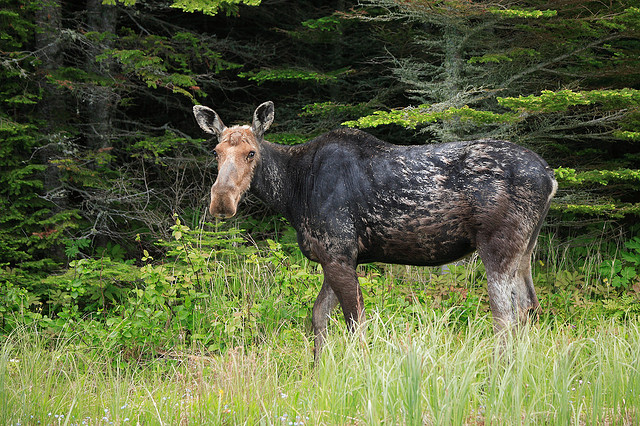
Moose arrived on Isle Royale much earlier than the
island’s wolf population, probably by swimming. Unlike wolves, moose are
big enough to survive Lake Superior’s frigid temperatures. (Photo: Ray
Dumas, Flickr CC BY-SA 2.0)
PETERSON: Well, we've seen certainly that new disease in the wolf fundamentally changes everything. In 1981, a mutant virus called Canine Parvovirus got to Isle Royale and the wolf population crashed and then the immigrant in 1997 resolved that. You sort have to look at the system as a historian would look at it and realize it's just one big event after another.
CURWOOD: But how did you track this predator-prey interaction over the years and its effects on the rest of the Isle Royale ecosystem?
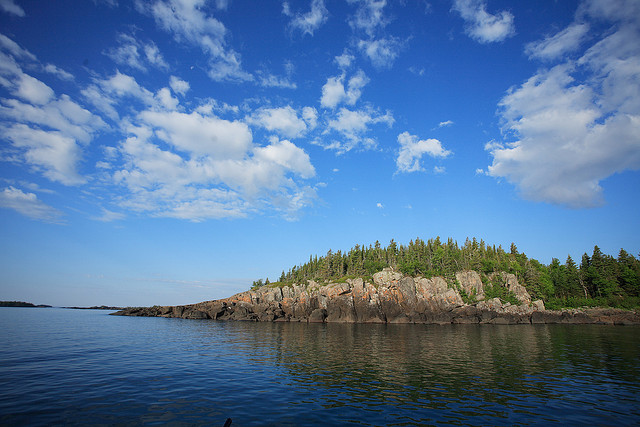
Isle Royale is over 45 miles in length and 9 miles
wide– making it the largest island in the largest freshwater lake (Lake
Superior) in the world. (Photo: Ray Dumas, Flickr CC BY-SA 2.0)
CURWOOD: Now, tell me, today about how many moose and how many wolves are on the island and what does the interaction look like right now?
PETERSON: Well, in 2015 we just wrapped up our studies a few weeks ago and there were three wolves, which is the lowest we've ever seen it and the moose are increasing pretty quickly. They stand at 1,250 animals right now and have doubled in the last four years.
CURWOOD: And what's been the high of the wolf population there?
PETERSON: Oh, we've had as many as 50 wolves in 1980 and the average is 20 to 30, roughly two dozen wolves.
CURWOOD: So why are there so few wolves there?
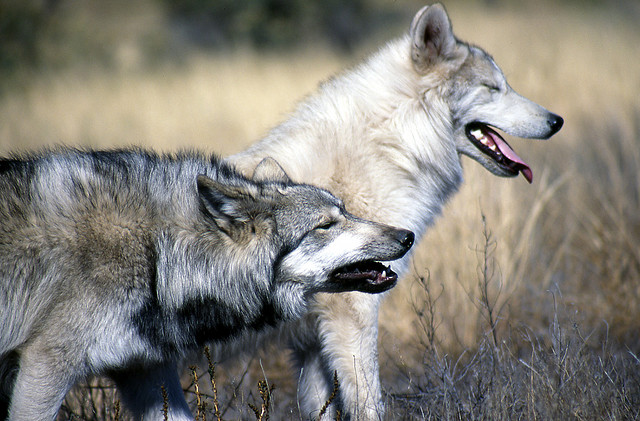
Aided by reintroduction programs and changing public
attitudes, wolves are making a comeback in the rural American West. On
Isle Royale, however, they’re in a steep decline and unlikely to
recover. Warmer winters mean that ice bridges rarely form between the
island and the mainland, so a new pack of wolves is unlikely to colonize
Isle Royale unless transplanted by humans. (Photo: Caninest, Flickr CC
BY 2.0)
CURWOOD: So how does the current population show its inbreeding?
PETERSON: The most obvious sign of inbreeding is the fact that they have spinal abnormalities. That means extra vertebrae or asymmetrical vertebrae. It started off low, a few percentage in 1994 that has risen to the point were 100 percent of the wolves had spinal abnormalities.
CURWOOD: With a warmer world, less often there's an ice bridge, so less often as a chance for some fresh wolf DNA to make it on an ice bridge over there. How accurate is that picture do you think?
PETERSON: That's pretty accurate. Back in the ’60s, when observations were first being made of wolves and moose, ice would be the typical situation in winter. You'd have an ice bridge four years out of five. Now it's more like one year out of 10.
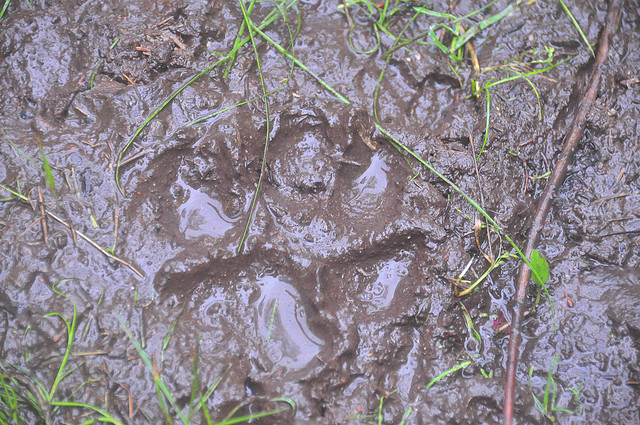
The wolf population on Isle Royale is in a death
spiral – the result of what geneticists call inbreeding depression. In
order to survive, small populations depend upon the arrival of new
breeding individuals that introduce new genes into the population.
(Photo: Viewminder, Flickr CC BY-NC-ND 2.0)
PETERSON: Well, given the genetic makeup of the current three that are left, I wouldn't give it a chance at all of survival. Without new genetic material, I'd say it's a doomed population. I'd recommended the last four years to do a genetic rescue, in other words, drop a couple wolves off from the mainland that would breed with the resident wolves. That should lead to a masking of deleterious or ‘bad’ genes, we could call them. At this point now in 2015 with only three wolves left the opportunities to do a genetic rescue are mostly gone.
CURWOOD: So what's the future of this longest predator-prey study in the world right now?
PETERSON: Well, the predator-prey study could become just a prey study and that loses a lot of its significance.
CURWOOD: Rolf Peterson is an Ecologist at Michigan Technological University and one of the wolf-moose project leaders at Isle Royal. Thank you so much, Rolf.
PETERSON: Thanks, Steve, it's been great to talk with you again.
source


No comments:
Post a Comment